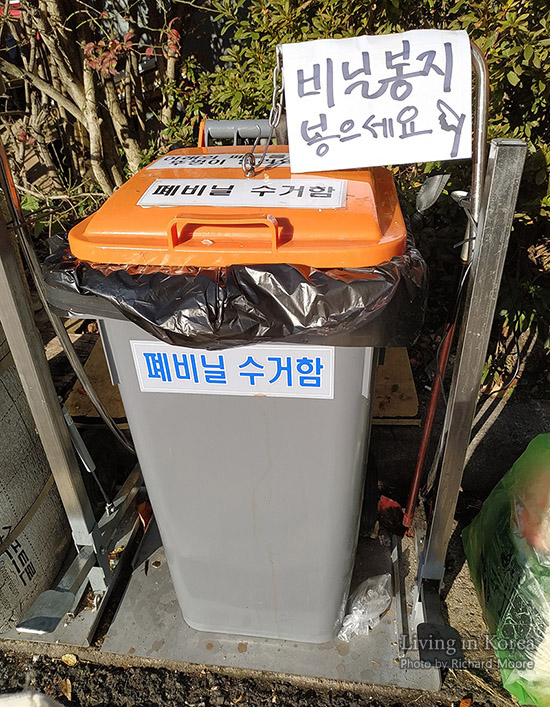Biodegradable waste is not necessarily food waste. A good rule of thumb for knowing what is food trash and what isn’t, is by gauging if a pig could eat the trash and remain healthy. Not only is this a good general rule, but a lot of the food trash thrown away in Korea is sent to pig farms. Leftover food, expired food, and anything else that was or is edible are acceptable. Shells, exoskeletons from seafood, feathers, bones, large seeds, chili peppers or chili paste, and items like tea bags are not easily digestible and are therefore not food trash.
| Category | Details |
|---|---|
|
|
|
|
|
|
|
|
If you dehydrate the food before you place it into the bag, you can place more food waste. If you slowly accumulate food trash, a good trick is to store the bag in your freezer. The cold temperature prevents the food from rotting, thereby giving you more time to use the bag for longer. This works the best if your area accepts food trash in official food trash plastic bags. Restaurants and some apartments use very large plastic cans that food is directly poured into. The image below shows a few of these large gray cans with orange lids getting picked up by the district trash truck along with trash bags.
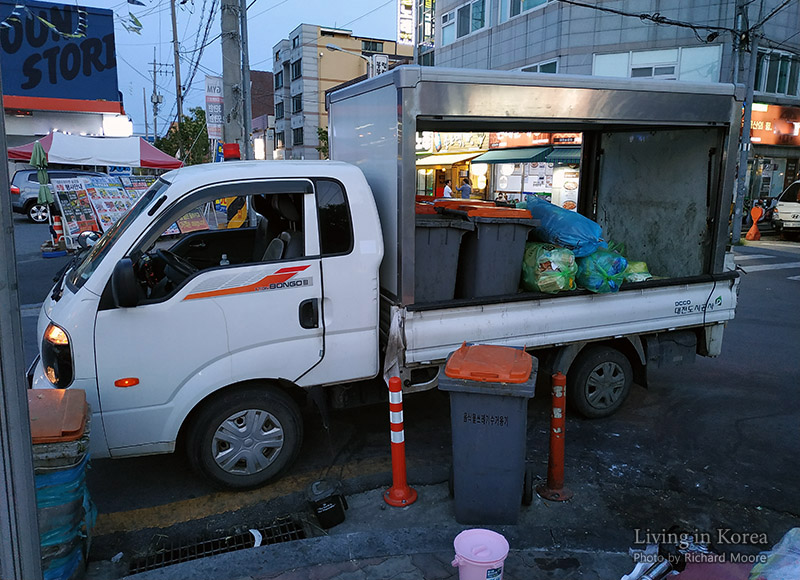
Some apartments have large plastic cans in which people are to put their food waste. Here is an example of a yellow can, but you might also see one of the gray and orange cans like the previous image shows. To identify these, the keyword you want to look for is 음식물 (飮食物, eumsingmul) which means food and drink.
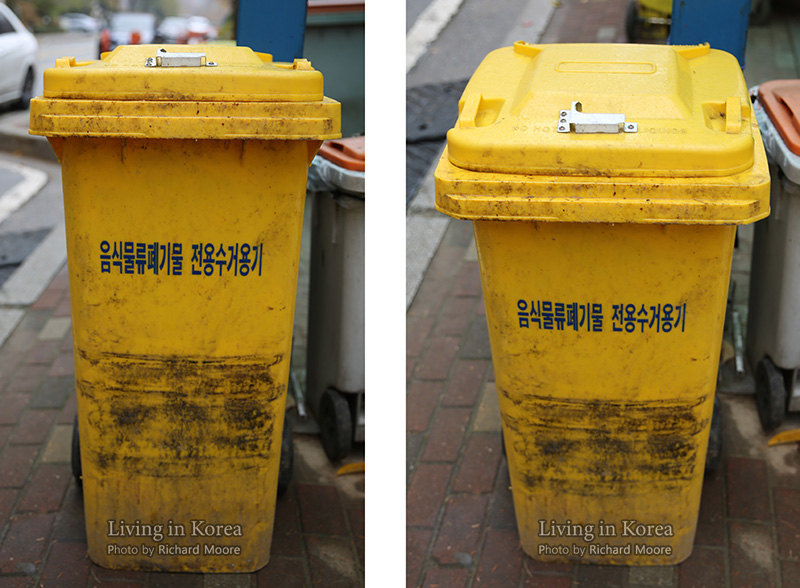
Some people put their food trash into generic plastic bags, dump it into these large cans, and then rinse the bag and recycle it. Others get special hard plastic cans that separate into sections. They dump the food trash into the larger cans, and then wash their family can at home and reuse it.
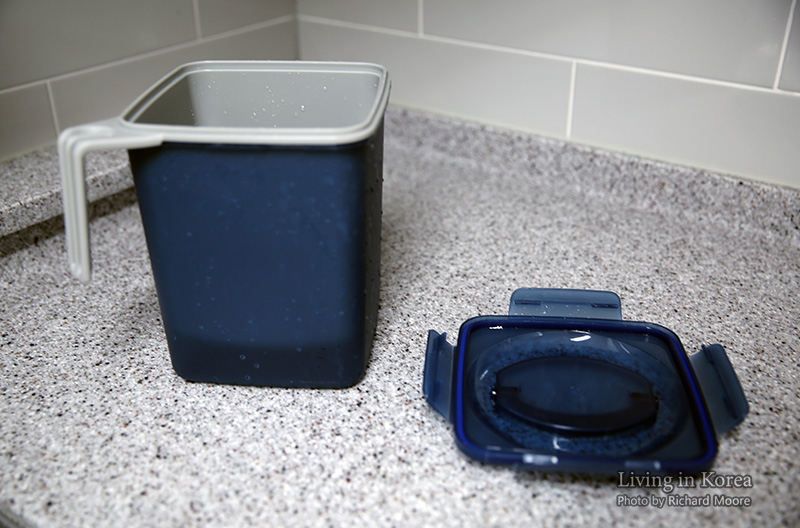
If you live in a residence other than an apartment, you’ll either put your food trash into official food trash bags you buy from a store and place them along the street next to the general trash, or put the bags into small plastic cans near the roadside so animals cannot rip open the bags. The method of disposal depends on the area. These cans are sometimes red, green, yellow, or maybe other colors.
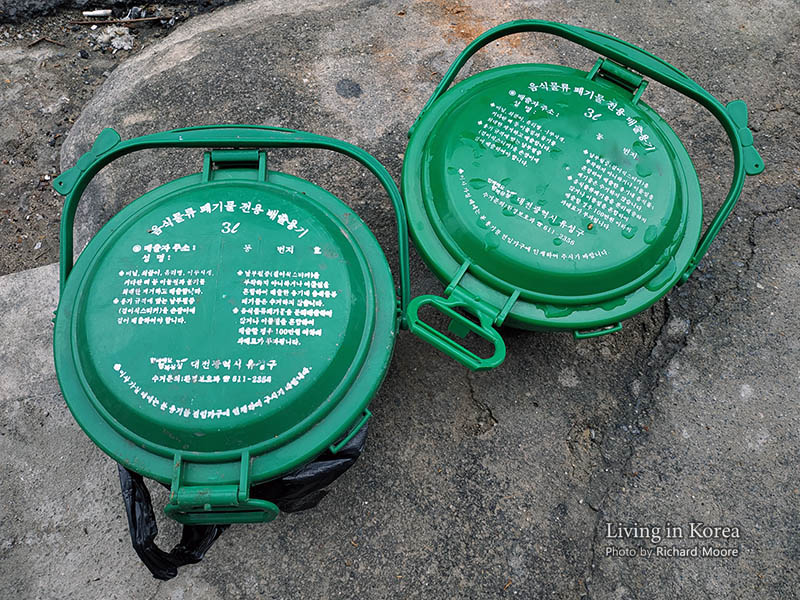
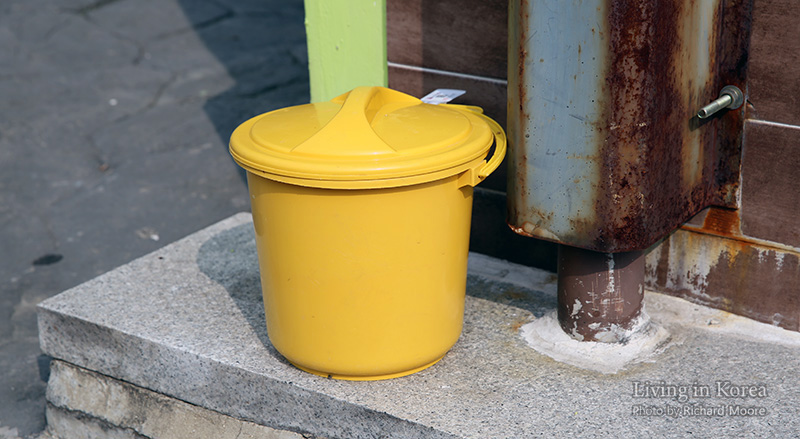
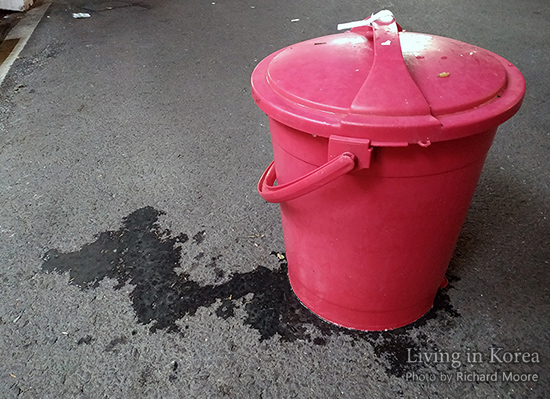
If you live in an apartment, you will pay for food trash to be disposed of. Either is bill is split among everyone evenly, or everyone pays for the food trash they dispose of. In order for the second system to work, there needs to be a billing and weight system. These machines do just that.

Here are two sets of instructions on how to use them. Don’t worry if you can’t understand it as we’ll go over the process. If you want a closer look, click the image to see a larger size.
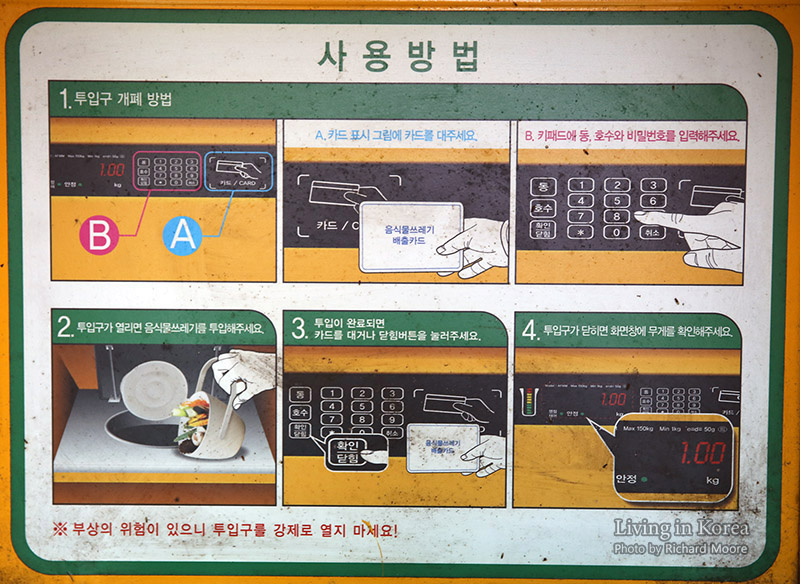

Here is the main display. The red LED lights show the time for now, but will show the weight later. The buttons on the right are to tell the machine your apartment number and password or you can use a card – either method will work for billing.

Here is a closer image of the keypad and spot to tap an ID card.
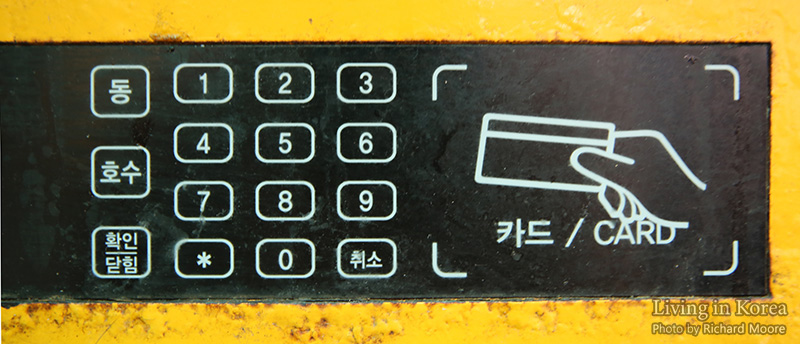
Once we have identified ourselves, the top will open up and we can dispose of the food trash inside. Pressing the 확인 (確認, hwagin) button on the keypad will close the lid and it will display the weight of the food trash. In this case, it is 1.45 kilograms.
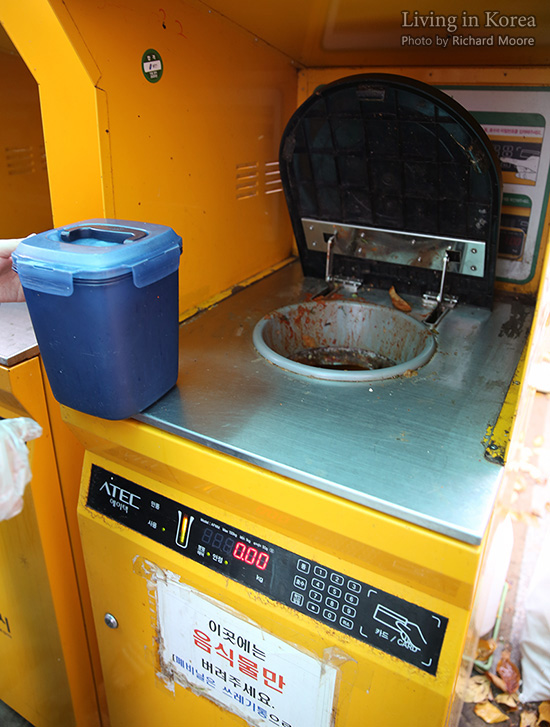

The day we took these pictures, we used a hard plastic container that we then rinsed out once we arrived home. Many people bring their food trash in plastic bags and so the food trash machine has a sign telling people to throw away the plastic bag in the trash can that the apartment has provided. If you want a closer look, click the image to see a larger size.
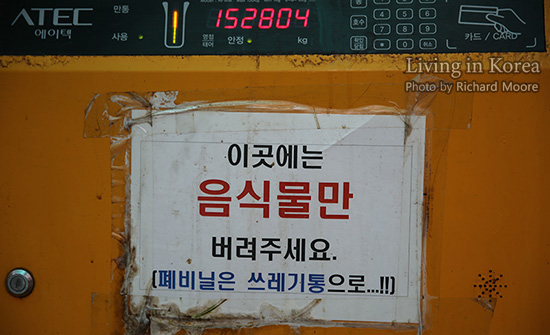
This trash can is reserved just for plastic bags that were used for food trash. The word 비닐봉지 (vinyl封紙, binil bongji) means "plastic bag".
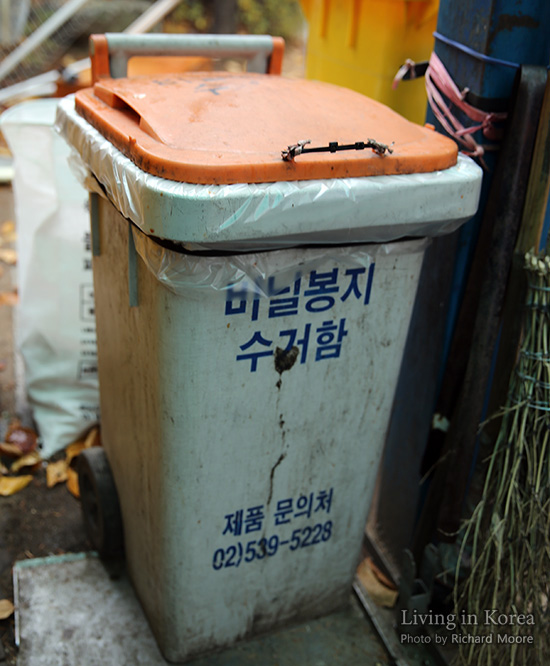
Here is a similar trash can just for throwing away plastic bags. The name is slightly different here being 폐비닐 (廢vinyl , pye binil) with 폐 meaning trash, i.e. they will not be recycled.
